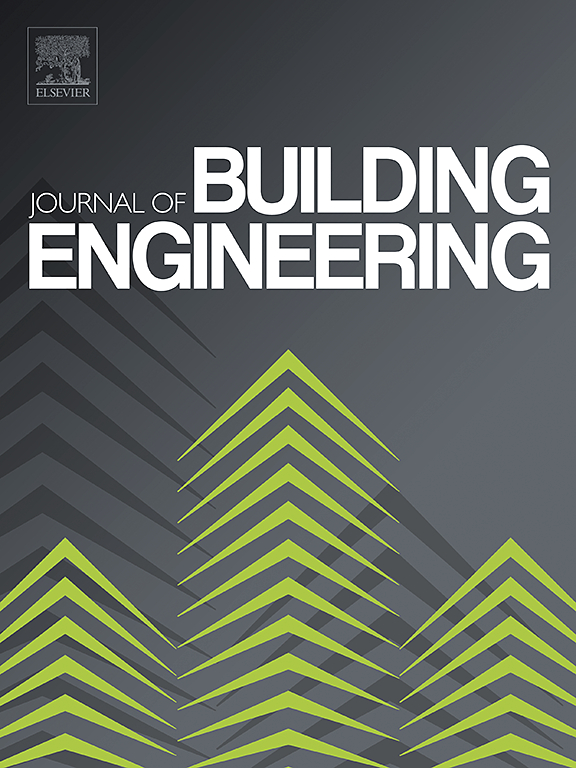建筑干扰下屋顶太阳能光伏板风荷载分析:风洞研究
IF 7.4
2区 工程技术
Q1 CONSTRUCTION & BUILDING TECHNOLOGY
引用次数: 0
摘要
研究了高层建筑对屋顶光伏阵列风荷载的干扰效应。研究了建筑间距比S和建筑布置方式的影响。干扰建筑放大了所有风向和模块中最大最关键的负峰值模力系数C + + fm,而与S和建筑布置无关。对最大最关键干扰因子IF(=3.31)影响最显著的是上游串列排列,S = 1.5。干扰建筑显著降低了上表面的负峰值压力系数,导致了较大的中频。采用基于风荷载的k-means算法研究了光伏阵列的面板分区。面板分区很大程度上受S和建筑布置的影响,特别是包括屋顶中心模块的区域。面板分区的临界S分别为1.5、4.0和8.0。各区域模块上最大临界碳氧fm随S呈线性下降,并对最大临界碳氧fm随S的变化进行回归分析。拟合的方程和面板分区方案提供了受邻近建筑干扰的屋顶光伏阵列的推荐设计负荷。本文章由计算机程序翻译,如有差异,请以英文原文为准。
Wind load analysis for rooftop solar photovoltaic panels in the presence of building interference: A wind tunnel study
The interference effect of a tall building on wind loads of rooftop photovoltaic (PV) arrays was studied. Effects of the building spacing ratio S and building arrangement were studied. The interfering building amplified the largest most critical negative peak module force coefficient among all wind directions and modules regardless of S and building arrangements. The most significant influence on the largest most critical interfering factor IF (=3.31) occurred for the tandem arrangement in the upstream direction with S = 1.5. The interfering building significantly reduced the negative peak pressure coefficient on upper surface contributed to the large IF. Panel zoning was studied using the k-means algorithm based on wind loads on PV arrays. The panel zoning was much affected by S and building arrangements, especially for the zone including modules at the roof center. The critical S of the panel zoning were 1.5, 4.0, and 8.0. The largest most critical on modules in various zones decreased linearly with S. The regression analysis of the largest most critical with S was conducted. The fitted equations and scheme of panel zoning provided recommended design loads on rooftop PV arrays interfered by the neighboring building.
求助全文
通过发布文献求助,成功后即可免费获取论文全文。
去求助
来源期刊

Journal of building engineering
Engineering-Civil and Structural Engineering
CiteScore
10.00
自引率
12.50%
发文量
1901
审稿时长
35 days
期刊介绍:
The Journal of Building Engineering is an interdisciplinary journal that covers all aspects of science and technology concerned with the whole life cycle of the built environment; from the design phase through to construction, operation, performance, maintenance and its deterioration.
 求助内容:
求助内容: 应助结果提醒方式:
应助结果提醒方式:


